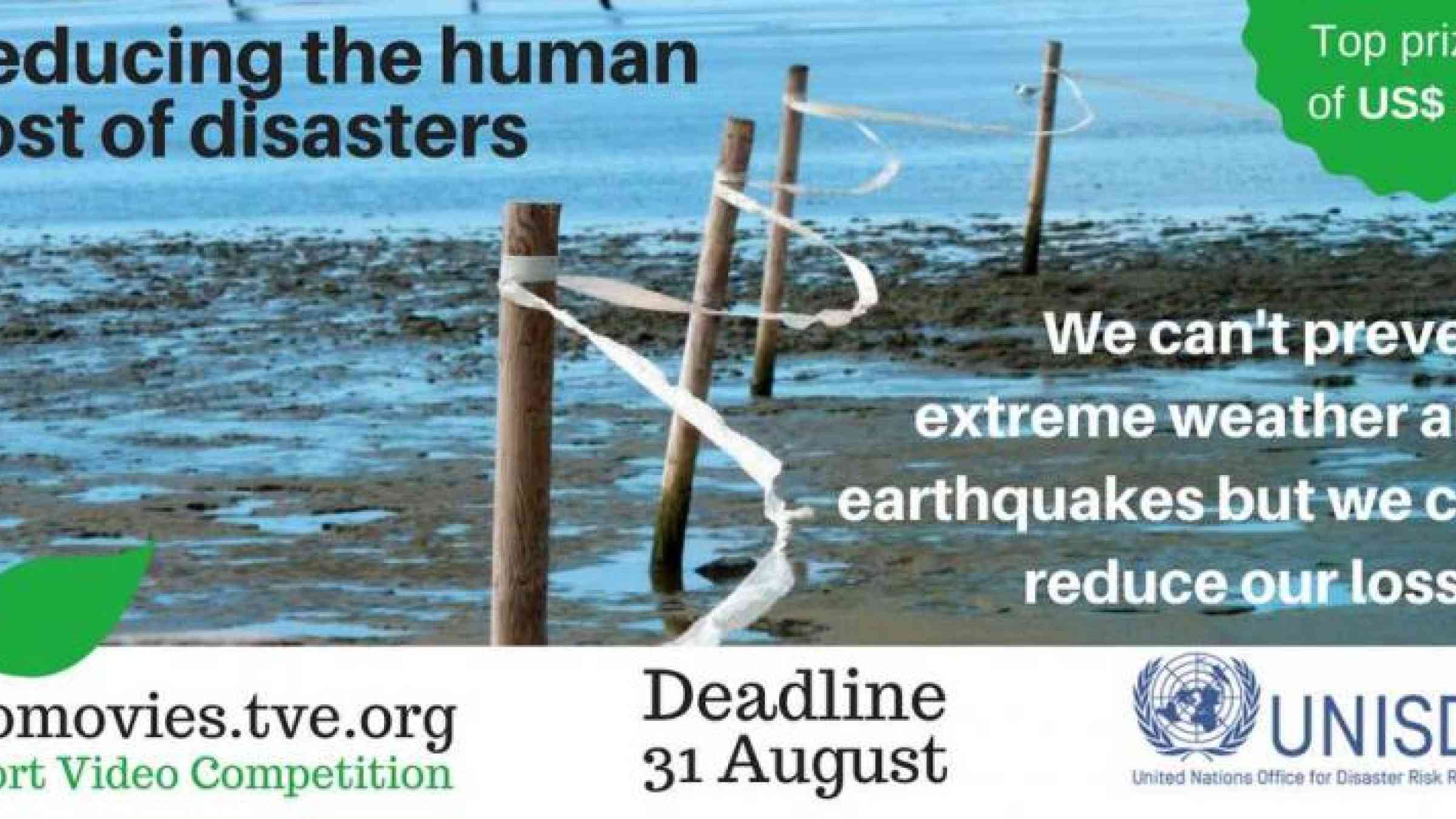Competition: Reducing the human cost of disasters

Around the world, many millions of people are affected by natural hazards. Floods, drought, landslides , wildfires, extreme weather, tsunamis or earthquakes, can all do enormous damage to communities, homes, schools and hospitals as well as causing loss of life and loss of income. More than US$520 billion is lost every year as a result of disasters, money that would be better invested in health, education, and building livelihoods.
But all over the world communities are finding ways to reduce the damage caused by disasters. There are many examples: building resilient homes and schools, establishing natural barriers to protect against storms, planting trees on hillside to prevent mudslides, growing resilient crops, developing technology to give advanced warning, and planning for better recovery from disasters.
Investing 1 dollar in disaster risk reduction can save up to 15 dollars in avoided losses and reconstruction.
Enter our competition by sending a 3 minute video about preventing and reducing economic loss from disasters. There are top prizes of US$500, and your films will be shown on International Day for Disaster Reduction, 13 October.
Natural Hazards
- Drought
- Extreme temperatures
- Landslides
- Volcaones
- Earthquakes
- Floods
- Storms
- Wildfires
Requirements
- Aged 14-30
- 2-3 minutes long
- Spoken or subtitled in English
- From any country
- Submit by 31 Aug 2018
Send a 3-minute video report showing how communities, groups and organisations are investing now to reduce the economic losses from disasters.
Films will be shortlisted by our judging team and the top ideas will be uploaded to YouTube and promoted through our web site and social media. The public will decide the top videos, each of which will be awarded a prize.
The top films will be used to help promote the International Day for Disaster Reduction on 13 October.
Some examples of prevention, warning, mitigation and recovery:
- Building flood barriers or developing natural protections such as vegetation cover, wetlands and mangroves
- Developing community business and livelihoods to enhance self reliance
- Developing water systems to store water in preparation for drought
- Using better technology to build and protect houses, making sure they are protected during high winds and storms
- Providing shelter for animals and crops during extreme heat or cold temperatures
Read about examples on Practical Action website.